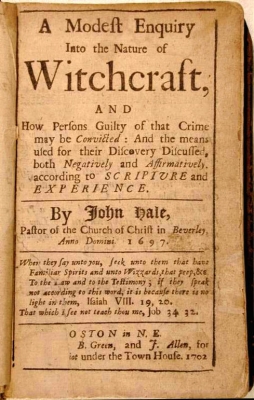
They floated instead of sank when dunked: One test for a suspected sorcerer was to tie him or her to a chair and toss it into a river. Genuine witches – supposedly immune to the holy power of baptism in water – would bob to the surface. Thus proven guilty, they were usually executed. Those innocent of witchcraft would sink instead of float. They often drowned, making this test a lose-lose proposition.
They were left-handed: In the age of witch hunts, southpaws lived under constant suspicion. Left-handedness was seen as an insult to the natural order of things and a sign of evil. In fact, the term “sinister” comes from the Latin word for “left.”
They bore the witch’s mark: Witches were thought to soar on broomsticks to “Sabbaths,” rowdy sorcery conventions held deep in the forest. At these sinister shindigs, the devil would initiate novice spell casters by scarring them with his horns. His “witch’s mark” could take the shape of animals – perhaps a cat or toad – or look like a birthmark. Accused witches underwent head-to-toe inspections for such markings.
They were at least 40 years old: Folks in their 40s are considered middle-aged today, but few people reached such a ripe old age in the 14th and 15th centuries. Those who did were suspected of cozying up with evil forces to achieve a freakishly long life.
They had a falling-out: At the height of the witch panics, people were encouraged to report suspected witches to religious officials and witch hunters. That gave anyone with a grievance the opportunity to get even. They could accuse enemies of witchcraft!
Picture Credit : Google
